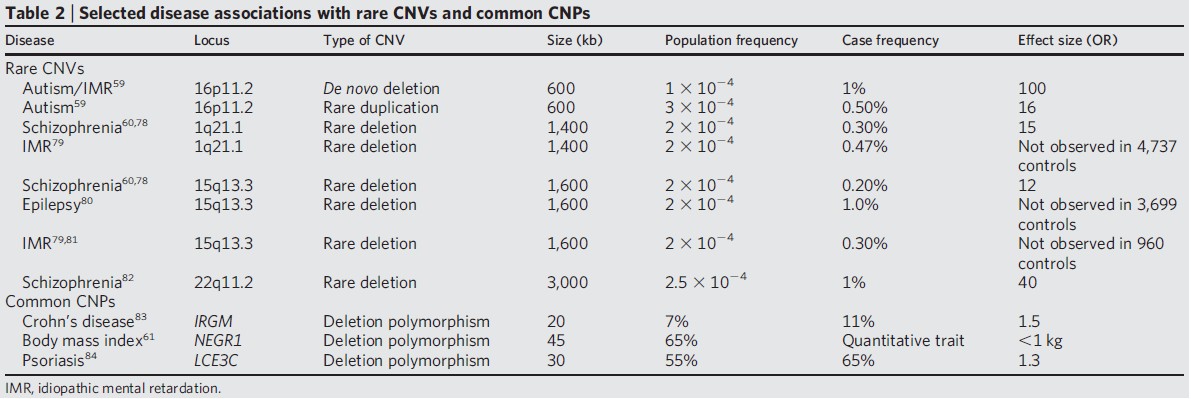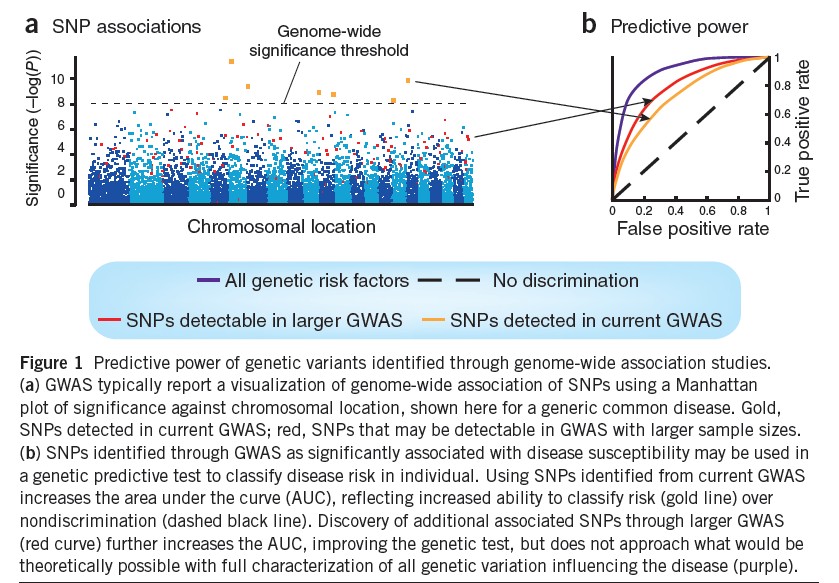Missing Heritability
Finding the missing heritability of complex diseases. Manolio et al 2009,Nature
Hints of hidden heritability in GWAS
Missing heritability and strategies for finding the underlying causes of complex disease
Finding the sources of missing heritability in a yeast cross
What is Missing Heritability
Many common diseases run in families. In some families, the risk of developing a particular disease can approach 50 %. Genome-wide association studies (GWAS) have successfully identified some of the genes that contribute to this risk, but for some diseases, a substantial portion remains unexplained. This gap has been called the 'hidden heritability', or 'missing heritability'
 Bigger Picture
Bigger Picture
Causes of Missing Heritability
There could be several major causes of missing heritability
- Contributions of rare variants, structural variants(CNV), epistasis, epigenetics, and genotype-environment interactions. Please see the two examples below:
 Bigger Picture
Bigger Picture
An example of how rare variants could have a big effect size(odds ratio) on the trait.
 Bigger Picture
Bigger Picture
An example of how structural variants(CNVs) could have a big effect size(odds ratio) on the trait.
- It could be possible that complex traits truly are affected by thousands of variants of small effect.
 Bigger Picture
Bigger Picture
Common SNPs explain a large proportion of the heritability for human height. Something worth commenting on this graph by Yang et al.2010(Nature genetics): Using regression approach, they are able to estimate the proportion of phenotypic variance explained by the SNPs as 0.45, a nearly 10 fold increase relative to the 0.05 explained by published and validated individual SNPs. Their result shows that 88 percent of variation due to SNPs has been undetected in published GWASs because the effects of the SNPs are too small to be statistically significant.

Bigger Picture
Figure in Hints of hidden heritability in GWAS , Gibson2010,showing that it is unlikely that GWAS will ever be sufficiently powered to uncover even the majority of the heritability. Thus it is important to evaluate how much of the heritability can, in theory , be captured by common variants. If the answer is less than, say, half, then we have a genuine missing heritability problem; Otherwise, this may suggest that most of the genetic variance is simply hidden below the threshold for genome wide significant association. This picture is for a generic disease that the author doesn't specify.